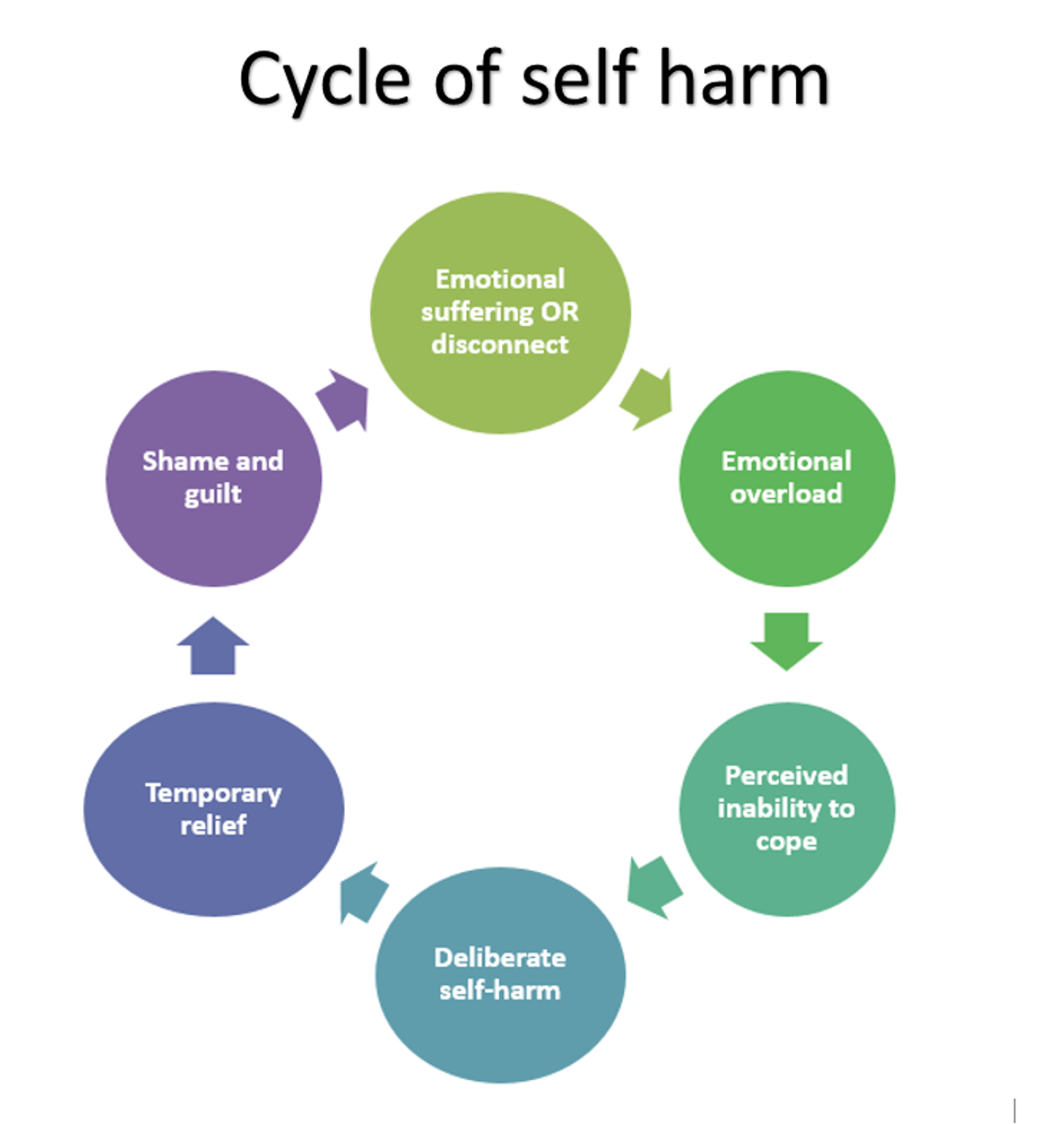Wellbeing:
Self-harm
Why? What is it? How can we help?

Wellbeing:
Self-harm
Why? What is it? How can we help?
Taken from group chats led by professionals | headspace & Understanding self-harm -- for health profesionals | headspace


Jacinta Vengtasamy
Mental Health Practitioner
There are a number of reasons why a young person may self-harm. It may be a way of telling other people about their distress and asking for help, a way of coping with stress or emotional pain, or a symptom of a mental illness like depression. Sometimes it suggests that they are thinking about suicide. Not everyone who self-harms is suicidal, but sometimes people die as a result of their self harm behaviour.
This video is a story about a young person's experience of self harm and her process of getting help. It is based on real life stories and the characters are played by actors.
Here’s another helpful video about self-harm:
Self-harm behaviours are varied. The severity, frequency and meaning of self-harm varies as does the behaviour it might involve.
Self-harm needs to be understood as often a response to intense emotional or physical pain and psychological distress, including overwhelming negative feelings, thoughts or memories, and a sense of hopelessness.
Click on the graphic to enlarge


For some, self-harming can have an addictive element, possibly due to the natural release of endorphins in response to pain, and possibly due to a lack of alternative coping strategies. In some cases, self-harm is accompanied by suicidal thoughts.
Rather than dismiss self-harm as a ‘cry for attention’ there is an urgent need for strategies that can promote community awareness and understanding of self-harm.
Like any learned behaviour, young people do sometimes copy other young people, so may begin self-harming when they learn that others are self-harming. However it begins, self-harming should be assessed individually and responded to, rather than ignored or dismissed.
Young people who have experienced abuse or sexual assault, bullying or other traumatic and distressing experiences are likely to be at increased risk of self-harm.
Addressing the underlying issues that negatively impact on a young person’s mental health and wellbeing are key.
For many people the kinds of help they need will include:
If you are concerned about someone in your family, the first step is to talk with them and offer support. Encourage them to talk as well to a school counsellor, school nurse, a teacher, a GP, a mental health professional.
Many young people support other people who are self-harming. This this can be really distressing and difficult and if your young person is in this position they probably also need support.